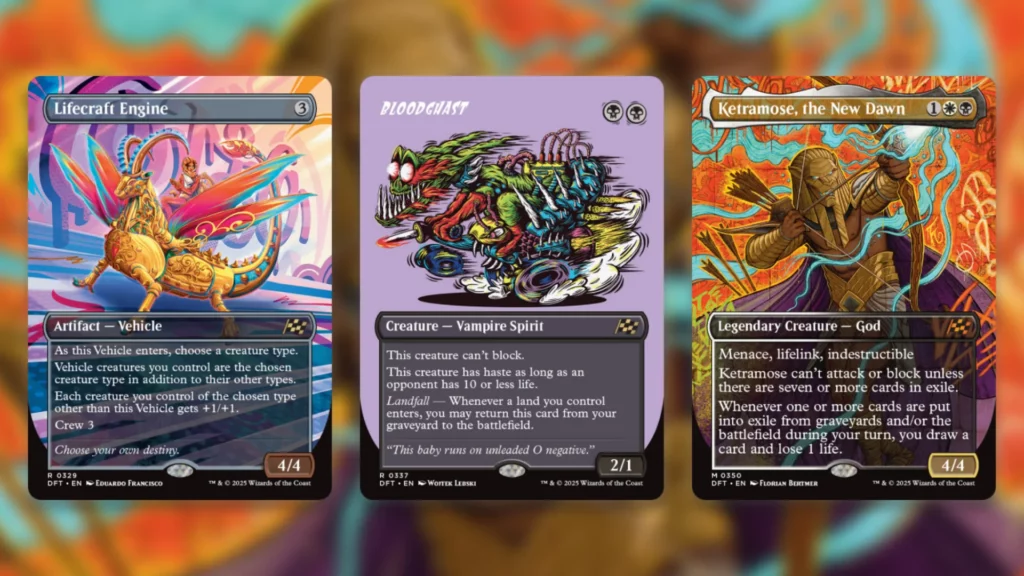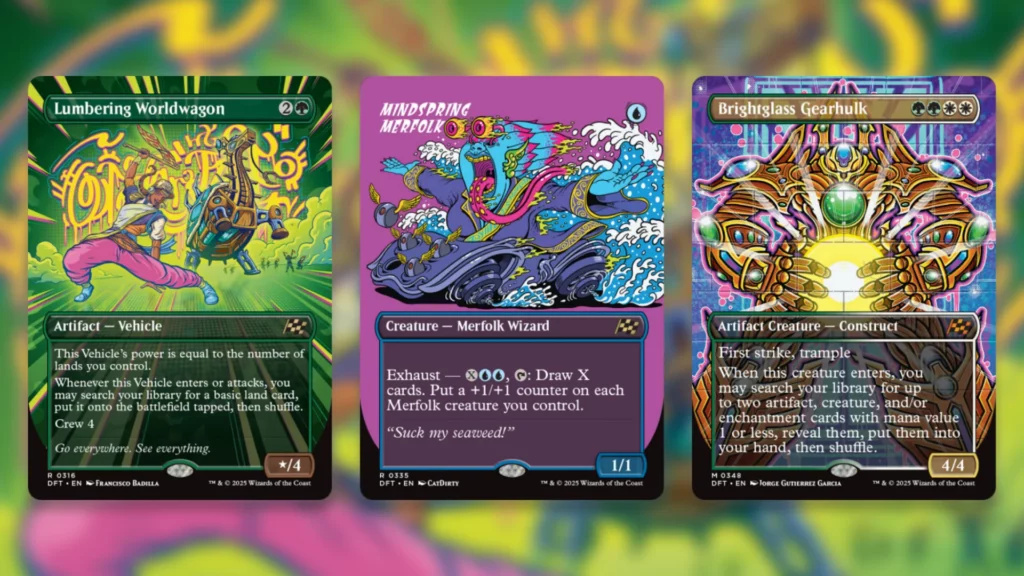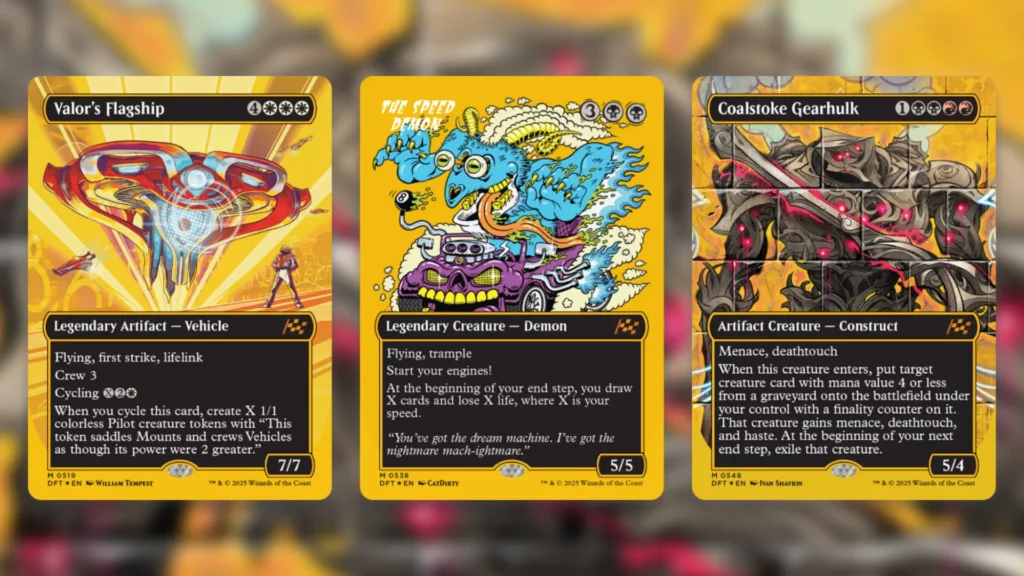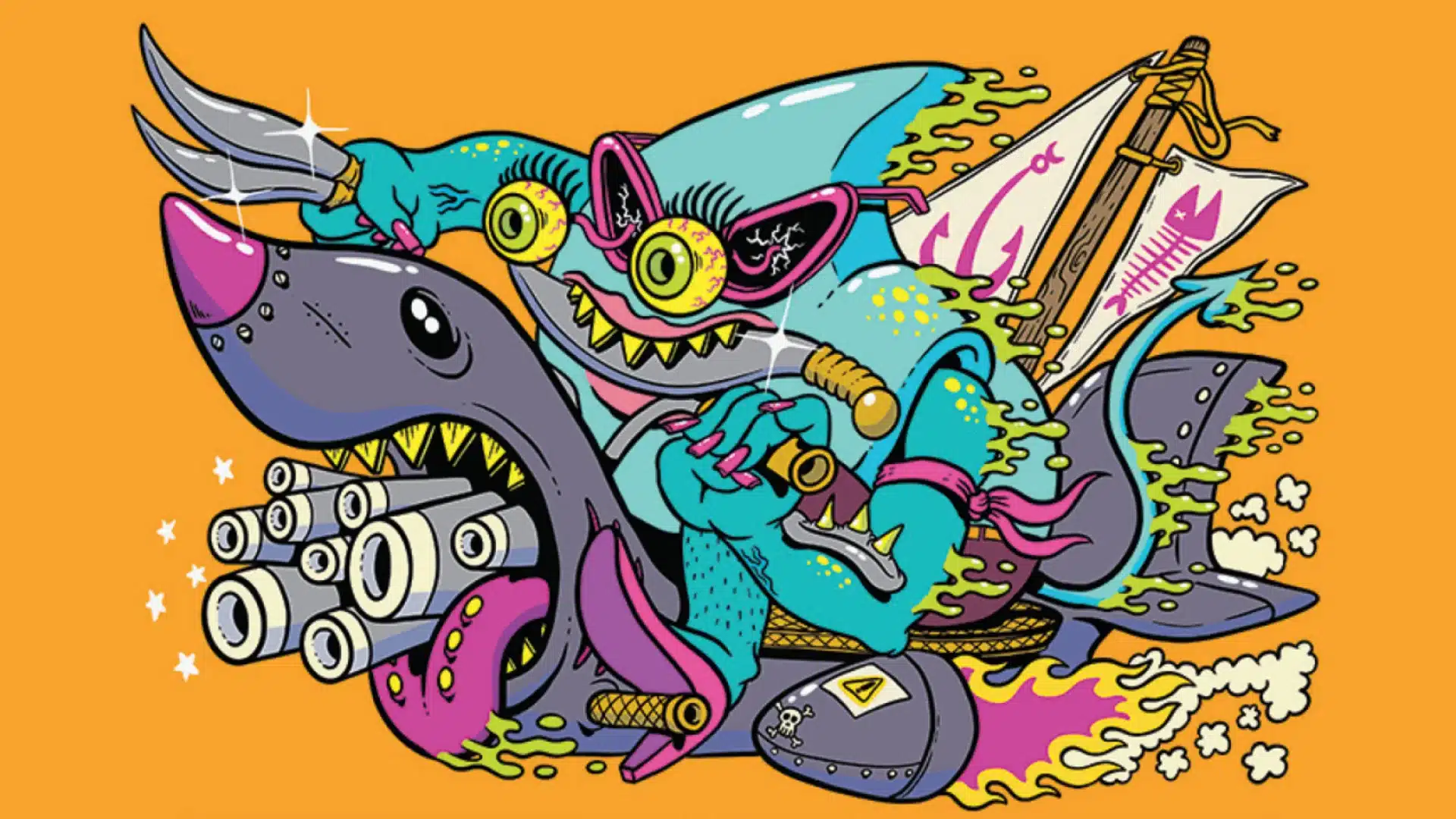As soon as previews for MTG Aetherdrift started rolling out, it was clear the set was pretty out-there art wise. Flashy Showcase styles are nothing new for Magic: The Gathering, of course, but these turned the dial way up to 11. In celebrating graffiti culture, Aetherdrift strayed about as far from Magic’s established aesthetic as any set has yet. Naturally, not everyone has been fully on board with this move.
Now that the set has had a few weeks to settle, we can get a clear picture of how these bold new styles have been perceived. The answer? Not very well, for the most part. Negative feedback is high, and that’s being reflected in the value of these cards on the secondary market. Showcase variants of cards rarely go for less than their basic counterparts, but that’s exactly what we’re seeing here.
The Controversial Art Of MTG Aetherdrift

The negative perception of the art in MTG Aetherdrift became apparent yesterday, in a post on Mark Rosewater’s Blogatog. A player by the name of legacy-rise let loose with a barrage of criticism of the Showcase styles in the set.
“Just a bit of feedback: I hate hate HATE the bizarre Secret-Lair-ish art style on (most of) the DFT Special Guest cards. And I hate that I ‘have’ to look at them because they’re a part of the Limited environment. Some of them are actively repulsive to me — and even others which I don’t mind in a vacuum are jarringly discordant with the set’s overall aesthetics, which is such an incredible shot-self-in-foot by WotC after putting all the work into creating those aesthetics in the first place.”
legacy-rise
While thoughts like this are nothing new, it’s rare to see them in such a concentrated form in one post. Rosewater responded to this heavy criticism by asking other Blogatog readers what they thought of the Aetherdrift Showcase styles. The answers he received, predictably, largely shared legacy-rise’s view on the matter.
Ebonstone commented “They are truly wretched. I yearn for the days that Magic cards actually looked like Magic cards.” Similarly, Themartiangeek “found them incredibly ugly,” while Fortsaveordie simply added, “kill them with fire.” There were many other negative comments mixed in too, several of which were just as emphatic.
Among these comments, the sentiments Ebonstone expressed were fairly common. Whether players liked the cards or not, they generally agreed that they didn’t hit the right “vibe” for Magic: The Gathering. Sanguine-bond hut this idea on the head, calling the cards “actively distracting and immersion breaking, but at this point trying to get immersed in MTG is like trying to skate up a hill.”
Comments like these were the norm, but the styles did have their defenders as well. Shortfallofgravitas said, “I love em to bits: it’s a very cool, very different style that’s interesting to look at but feels at home in the set.” Snickerdoodlesandsausages added “I’m a huge fan tbh, I love it when y’all experiment and stray out of the lane of “normal” magic art.” We’ll come back to these pockets of support later, as they’re crucial to understanding the place these cards hold in the market.
The Market Speaks

Online comments are one thing, but if you really want to gauge the popularity of a particular card style in Magic: The Gathering you need to look at prices. Out in the wild, supply and demand overrides mere sentiment in many cases. Examining the prices for the special art variants in MTG Aetherdrift, it’s clear that these ideas actually are widespread.
You can tell this by looking at how the prices on these variants compare to the standard versions of the card in question. Generally, Showcase variants always go for a higher price than their regular counterparts. This makes total sense since they tend to be more scarce in terms of print runs and they also tend to have strong aesthetic appeal.
In Aetherdrift, most Showcase variants go for the same price, or in some cases less, than the regular versions. The Graffiti Giant version of Brightglass Gearhulk, for example, goes for over a dollar less than the normal printing. This trend applies to lower-value cards, too. You can get a regular copy of Mindspring Merfolk for $0.44, or a Rude Riders copy for $0.35. The Revved Up treatment on Lumbering Worldwagon also goes for $0.44, just under the $0.45 the original goes for.
These aren’t massive differences, but the fact that they exist at all is pretty remarkable. Special treatments are usually synonymous with higher prices in Magic, and you can even see this elsewhere in Aetherdrift itself. If you look at the more typical Borderless cards, you’ll find that most go for more than the originals. Oviya, Automech Artisan and Mendicant Core, Guidelight, to give just two examples. This is a pretty clear-cut case of a style’s low popularity being reflected in low demand in the secondary market.
Not So Simple

Interestingly, this isn’t where the story ends. Looking at the First Place Foils for MTG Aetherdrift flips the dynamic I discussed above on its head. In pretty much every case, the Showcase First-Place Foil (FPF) version of a given card is far more valuable than the regular version. This is even though ratios of regular to Showcase treatments in Box Toppers are pretty much the same as those of Play Boosters.
The reasoning behind this is simple. While you have a similar chance to hit a Showcase card in a Box Topper as you do in a Play Booster, Box Toppers are opened far, far less overall. This amplifies the rarity of the rarer FPF cards.
If you make a Magic card rare enough, aesthetic value ceases to be a factor. Just look at the Amonkhet Invocations if you need an example. This art style was pretty much universally panned on release, and yet the cards still sold for high prices. Even today the more high-end Invocations, like The Scarab God, still command value over $200.
When it comes right down to it, scarcity can override pretty much all other factors when determining the price of a card. This goes for the mechanics of a card, too. Adun Oakenshield is comically weak compared to pretty much any modern three drop legendary, but it’ll still set you back about $90 because it’s on the Reserved List. Ultimately, no matter what the community thinks of a card visually or mechanically, it can still pack a hefty price tag if there simply aren’t many of them. As “actively repulsive” as the Aetherdrift Showcase cards may be to some, this principle still very much applies.
